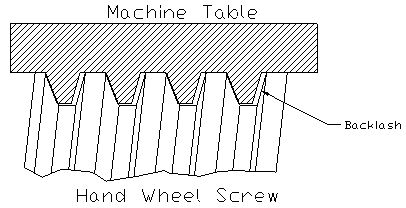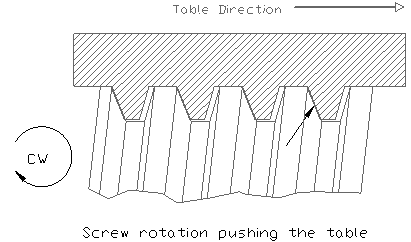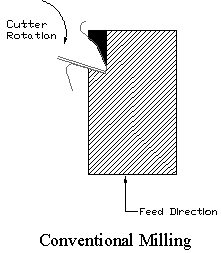| 4 편 기 계 가 공 |
|---|
|
Milling Machine의 backlash 제거
|
|
 Fig. 1 |
Backlash is a term that applies to machine tools. Backlash refers to the "play" or excessive amount
of clearance between the machine hand wheel screw and the nut attached to the machine table or
slide(Fig. 1). |
 Fig. 2 |
Backlash is common on manual machine tools, especially milling machines, and is due to wear or adjustment. Backlash must be compensated for. To compensate for backlash, you must get, and keep the slide (table) and screw in contact with one another (Fig. 2). |
 Fig. 3 |
It is also very important to keep in mind the cut direction as it relates to backlash. On conventional milling machines, that are not equipped with backlash eliminators, the feed direction should always be against the spindle rotation (Fig. 3). |
 Fig. 4 |
This is known as conventional or up milling. By working the cutter rotation against the feed, the backlash is taken up. Climb milling, or down milling, must be avoided on a machine not equipped with a backlash compensation mechanism. In climb milling, the feed direction is into the cutter rotation (Fig. 4). |
|
Therefore, climb milling, as the name implies, causes the tool to want to climb onto the part. When this happens,
the workpiece gets pulled into the cutter causing the excessive cutting pressure to seriously damage
the workpiece, cutter, and milling machine arbor. |
|
|
|